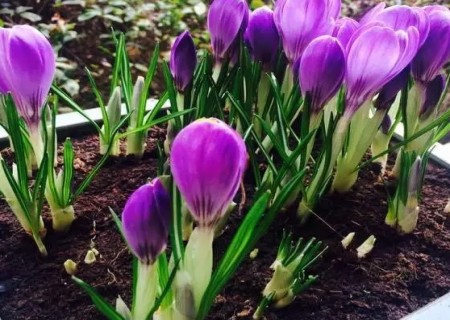Planting techniques of Osmanthus fragrans in four Seasons
In recent years, the newly emerged "four Seasons Gui" has become a rising star in the sweet-scented osmanthus family. It breaks the general practice of sweet-scented osmanthus varieties blooming only once a year, and can blossom 4 times a year in February, May, August and November, usually with a flowering period of more than 20 days per season. The flowers are dense, yellow and white, evenly distributed in the branches, and the fragrance of the flowers is more persistent. It has a rich smell and makes people feel good. It can be used as spice for making tea and cakes.
Four seasons osmanthus is an excellent variety of sweet-scented osmanthus, blooming in four seasons, fragrance in four seasons. The fragrance is rich in summer and autumn and slightly fragrant in spring and winter. Cultivation in the four seasons can not only beautify the environment, but also be used as medicine. Its root stew can treat deficiency, fire, toothache and sore throat. Both balcony and courtyard can be cultivated. How to plant sweet-scented osmanthus trees in four seasons? Next, I would like to introduce the planting techniques of sweet-scented osmanthus trees.

1. Distribution of soil
4 parts of humus soil, 3 parts of sand and 3 parts of mature barnyard manure were added with a small amount of fish scales, bone meal and so on, or 5 parts of mountain mud, 3 parts of rotten leaf soil and 2 parts of sand were mixed and applied. In order to overcome the alkalinity of soil and water quality, during the growing period, 0.1% Mel 0.2% ferrous sulfate solution was sprayed every half month or so to make its branches and leaves dark green and beneficial to growth.
2. Transplanting
After transplanting, use grass rope or film to wrap the trunk to moisturize until the tree survives, because the skin of sweet-scented osmanthus tree is thin, and water is easy to be lost through the epidermis, which can avoid direct light and dry-hot wind to reduce water evaporation. Second, it can protect the water in the tree before the new roots grow.
3. Watering
Generally, it is watered once every 2-3 days in spring; in summer, the temperature is high and the evaporation is large, which coincides with the stage of sweet-scented osmanthus development and flower bud differentiation, which is watered once a day; in the first and middle of September, the basin soil needs to be kept moist, otherwise it is not easy to bloom. But in the flowering period, can not pour water, in order to prevent falling flowers. Drain water in time on cloudy and rainy days to prevent stagnant water from rotting the roots. At ordinary times, it is appropriate to keep the water content of the basin soil about 50%.
4. Fertilization
From April to May, it was applied every half month or so, and from June to July, it was applied every 7-10 days. It was applied for the last time in early August, so that sweet-scented osmanthus not only grew luxuriantly, but also blossomed more and fragrant. Can use rotten cake fertilizer water, chicken, duck and pigeon dung, fish scale water, calcium superphosphate and bone meal and so on. If the fertilizer is insufficient, there will be fewer branches, thin plants, poor shoot growth, few flower buds, sparse and unfragrant flowers, and even can not blossom, seriously affecting the ornamental effect.
5. Pruning
In order to make it blossom and flourish, the physiological balance of reproductive growth and vegetative growth should be maintained, and proper shaping and pruning must be carried out. Before transplanting, in order to reduce water evaporation, cut off some of the luxuriant branches and leaves of sweet-scented osmanthus seedlings; in order to stimulate rooting, you can also cut off some of the overlong roots, but do not hurt the main roots.
6. Turn the basin
It is necessary to change a slightly larger flowerpot for sweet-scented osmanthus after the beginning of spring the next year. First put the nutritious soil after 3 cm at the bottom of the large basin, add two bottle caps compound fertilizer and sprinkle evenly; then put the sweet-scented osmanthus down, cut off the root system outside the hole at the bottom of the basin, gently shake it a few times, pull out the sweet-scented osmanthus with soil, be careful not to spread it, put it into the big basin, add soil, press a little tight, and water it.
Time: 2019-05-24 Click:
- Prev

Technical diagram of high pressure branches of pomegranate bonsai
Pomegranate is soft and easy to shape, so it is a good tree species for rapid prototyping to make bonsai. The method of cultivating pomegranate bonsai with high pressure method according to the characteristics of strong germination, high survival rate and easy cultivation of pomegranate, the traditional branch pressing method was used to selectively extract high branches of pomegranate trees in order to obtain pile wood with better shape.
- Next

Diagram of planting method of potted saffron bulb
Saffron, also known as saffron, saffron, is a perennial herb of the saffron genus of Iridaceae. It has a familiar name saffron. It is a perennial flower of the saffron genus of Iridaceae, and it is also a common spice. Family potted plants are suitable for selection of spring flowering varieties.
Related
- Fuxing push coffee new agricultural production and marketing class: lack of small-scale processing plants
- Jujube rice field leisure farm deep ploughing Yilan for five years to create a space for organic food and play
- Nongyu Farm-A trial of organic papaya for brave women with advanced technology
- Four points for attention in the prevention and control of diseases and insect pests of edible fungi
- How to add nutrient solution to Edible Fungi
- Is there any good way to control edible fungus mites?
- Open Inoculation Technology of Edible Fungi
- Is there any clever way to use fertilizer for edible fungus in winter?
- What agents are used to kill the pathogens of edible fungi in the mushroom shed?
- Rapid drying of Edible Fungi

